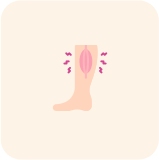Summary
Delayed puberty occurs when a child does not show signs of puberty by the expected age—typically by 13 years in girls and 14 years in boys. It is more common in boys and can be caused by temporary (functional) factors such as chronic illness, poor nutrition, or excessive exercise, or by underlying medical conditions affecting hormone production (organic causes).
Many children with delayed puberty are first noticed due to slower-than-expected growth rather than a lack of puberty signs. A thorough medical evaluation is important to determine the cause. In some cases, puberty will start on its own with time, while others may require treatment.
Diagnosis and When to Seek Help
You may want to consult a doctor if your child:
- Has not started puberty by age 13 (girls) or 14 (boys)
- Is much shorter than peers and growing slowly
- Shows no signs of breast development (girls) or testicular enlargement (boys)
- Has a family history of delayed puberty
- Has other health conditions that may affect growth and puberty
Doctors assess growth patterns, pubertal development, and hormone levels through blood tests and imaging studies. In some cases, distinguishing between a normal delay and a medical condition may take time.
Management
Treatment depends on the cause of the delay:
- Constitutional (self-limited) delay: Often runs in families and does not require treatment. Doctors may monitor the child over time. A short course of sex hormones may be considered if the delay is causing distress.
- Hormone deficiencies or medical conditions: If puberty does not start naturally, hormone therapy may be needed. Boys may receive testosterone, and girls may receive estrogen to help start puberty. In some cases, long-term hormone therapy is required.
Follow-Up and Monitoring
Children with delayed puberty need regular follow-ups to track their growth and development. If puberty does not progress as expected, further tests and treatment adjustments may be needed.
For most children, delayed puberty is temporary and resolves with time. If you are concerned about your child’s growth or development, speak with a doctor for guidance and reassurance.
History and Exam
Key diagnostic factor
- Presence of risk factors
- Boys: testes volume < 4 mL
- Girls: absent breast development
- Absent pubic/axillary hair
Other diagnostic factors
- Short stature
- Dysmorphic features
Risk factors
- Family history of delayed puberty
- Congenital pituitary structural abnormalities
- Gene mutations
- Chromosomal disorders
Diagnostic Investigations
1st investigations to order
- Tanner staging
- Measurement of testicular size
- Non-dominant wrist X-ray
- Basal follicle-stimulating hormone (FSH) and luteinising hormone (LH)
Investigations to consider
- Luteinising hormone-releasing hormone stimulation test (LHRH)
- Inhibin B
- Anti-Mullerian hormone (AMH)
- Human chorionic gonadotrophin (hCG) stimulation test
Emerging Tests
- Overnight gonadotrophin profile
- Genetic sequencing
- Measurement of LH following stimulation with kisspeptin


